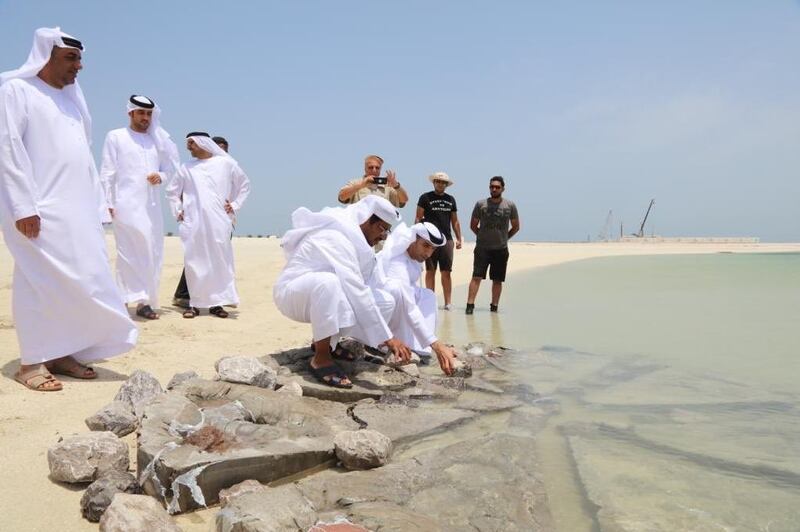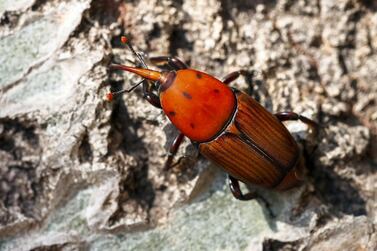Artificial tidal pools will be built along the coastline of Ras Al Khaimah as part of a pilot project to provide a habitat for marine creatures and organisms.
These pools mimic natural environments with the aim to support marine ecosystems for species such as crabs, molluscs, sea urchins, plankton and other invertebrates.
The Ministry of Climate Change and Environment announced it broke ground last week on the project at Al Jazirah Al Hamra, a city in the south of the emirate, and has plans to establish between 10 and 15 pools.
Tidal pools are shallow pockets of seawater that form on rocky inter-tidal shores and can be filled with water during high tide.
"Tidal pools naturally occur in areas where you have a rocky coastline," Dr John Burt, associate professor of biology at New York University Abu Dhabi, told The National.
“Erosion and gradual degradation of the rock creates holes, water fills these holes when the tide is up and remains there when the tide is down. They vary in size, from around 10 centimetres to maybe a couple of meters in size."
Dr Burt said these areas are extremely important for biodiversity because they tend to hold a diversity of organisms that only occur in that area.
"You won’t find [the same organisms] out in the open water. They intend to be quite specialised to one specific area,” he said.
“The pools are quite shallow and the water is normally quite warm, so you get a lot of algae growth. Then marine creatures are eating that algae as well, so it is a unique habitat."
The professor said that as most of the UAE coastline is made up of sand, tidal pools are usually not found, apart from in rockier areas such as in the far west of Abu Dhabi and in RAK, where the sea hit the mountains.
The creation of artificial tidal pools is a new concept in conservation and has only been explored over the past 15 years, with most of the work done in Australia and Europe.
Today & in collaboration with local entities, we announced breaking ground on a project to build tidal pools that mimic natural ones along #UAE coastline, to support coastal #ecosystems through establishing habitat areas for key coastal species pic.twitter.com/8YY8XTjGty
— د. ثاني الزيودي (@ThaniAlZeyoudi) April 28, 2019
“Artificial tidal pools enhance local biodiversity, but they tend to get different organisms in them compared to natural pools because of the orientation of the structures,” Dr Burt said.
RAK Environment Protection and Development Authority will oversee the project, in co-ordination with the MOCCAE, while research scientists and ecologists will observe the pools and study how the local marine life adapts to the new habitat.
Dr Thani bin Ahmed Al Zeyoudi, Minister of Climate Change and Environment, said the project aims to sustain the UAE’s marine biodiversity, which has been affected by urbanisation and other human activity.
Dr Saif Al Ghais, director of RAK's Environment Authority, said it will create areas for students and researchers to study the various species of the Arabian Gulf.
Based on the outcomes of this pilot, the initiative may be expanded across all of the emirates.







